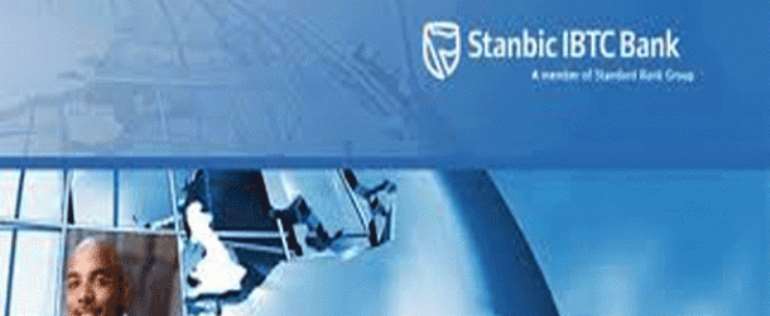Stanbic IBTC Bank moves against industry trend - THE CITIZEN

Stanbic IBTC Bank's cost-revenue structure in 2012 isn't in line with the general industry trend in the year. The bank moved against the trend of declining provisions for credit losses in 2012, indicating that more risk assets have been classified.
Current provisioning for bad loans and advances more than doubled at 105.9% during the year - so far the highest increase in provisions for anticipated losses in the industry. This follows an exceptional growth in provisioning in the preceding year. Such a major increase in provisions for loan losses was not expected at a time that the risk asset quality problem in the banking sector was thought to be a thing of the past.
Write back of previous loan loss provisions and a drop or moderation in new provisioning were the general trend in the banking industry in 2012. The major profit recovery and growth reported by banks so far were achieved largely through huge cost savings from declining provisions for problem loans. Guaranty Trust Bank recorded a drop of 96% in provisions for risk asset losses during the year and Zenith Bank's provisions came down by 45% during the same period.
A cut back in loan loss provisioning provided the major stepping stone for Diamond Bank back into profit in 2012. Its provisions for risk asset impairment had dropped by 69.3% in 2012. Skye Bank cut down loan loss provisions by 50.7% last year and Access Bank's provisions moderated at 5.1% of gross earnings against 7.0% in the preceding year.
Fidelity Bank reported a drop of 72.4% in loan loss reserve in the same period. Unity Bank also achieved a moderation in loan loss provisioning, which claimed a slightly lower share of gross earnings at only 2.6% in 2012.
Moving against the general trend, fresh risk asset provisions made a further incursion into Stanbic Bank's revenue in 2012. The share of revenue claimed by the provisions expanded from 5.3% to 7.5% during the review period. Loan loss provisioning of the bank had soared by 658.9% in 2011, causing a major weakness in converting revenues into profit in the year.
The major increase in provisions for credit losses is despite a moderate increase of only 3.7% in the bank's loans and advances figure. This indicates that the bank still has significant problem assets to contend with.
Gross earnings of the bank rose by 44.9% to N91.86 billion in 2012. This is an accelerated growth from 11.7% improvement in the preceding year. The net increase of N28.48 billion in revenue however failed to flow down to the bottom line. The bank retains the strength in generating revenue with its assets but weakness in converting the revenue into profit. The high rise in provisions for credit losses is one of the two major cost increases that prevented the revenue from getting down into profit.
The second cost item that stood in the way of profit growth is interest cost. While interest income grew by 63.2% in the year, interest expenses more than tripled at 211.6%. Interest cost therefore claimed a significantly expanded share of gross earnings from 12.3% in 2011 to 26.4% in 2012. Rising cost of funds was a general trend in the banking industry last year.
Operating expenses moderated in the year and therefore helped to temper the effects of the sharp increases in interest expenses and loan loss provisions. Operating cost claimed a reduced proportion of gross earnings at 53.1% compared to 65.9% in the preceding year. Despite the decline, the bank's operating cost margin remains high by industry standard.
The relatively high operating cost of the bank kept profit margin comparatively low. Net profit margin came down from 11% in 2011 to 9.7% at the end of 2012.
Profit performance was significantly improved by a drop in the effective tax rate in 2012. The bank's effective tax rate dropped from 34.3% in 2011 to 13.4% in 2012, representing a drop of 54.7% in tax liability. The tax saving pushed up profit from continuing operations, giving a semblance of profit growth in the year. The development prevented possible decline in profit for the second year or flat growth in the profit of the bank.
The bank's net profit had dropped from N8.80 billion in 2010 to a restated figure of N5.67 billion in 2011. Following the tax advantage, net profit recovered to N8.89 billion in 2012.
The favourable effect of the tax saving on profit appears to hide the impact of the two major cost increases that affected earnings performance during the period. The high rise in interest expenses and a major advance in loan loss provisions hindered the ability to convert a good part of the bank's revenue into profit.
Earnings per share improved from 30 kobo in 2011 to 88 kobo in 2012. The increase also reflects a drop in the volume of shares following some share cancellation in the process of holding company restructuring.
The bank is paying a dividend of 10 kobo, which is unchanged from the 10 kobo it paid in 2011. This is a dividend yield of 0.8% – one of the lowest yields so far in this earning season. It represents a pay-out ratio of 11.4%. The register of shareholders will close on 3rd May 2013 and payment date is yet to be advised.
